- Home
- Madeleine L'engle
The Rock That Is Higher
The Rock That Is Higher Read online
ALSO BY MADELEINE L’ENGLE
An Acceptable Time
And Both Were Young
The Anti-Muffins
Anytime Prayers
The Arm of the Starfish
Bright, Evening Star
Camilla
Certain Women
A Circle of Quiet
A Cry Like a Bell
Dance in the Desert
Dragons in the Waters
Everyday Prayers
Friends for the Journey (with Luci Shaw)
Genesis Trilogy
The Glorious Impossible
A House Like a Lotus
Isla
The Irrational Season
The Journey with Jonah
Ladder of Angels
Lines Scribbled on an Envelope
A Live Coal in the Sea
Love Letters
Many Waters
Meet the Austins
The Moon by Night
Mothers & Daughters
The Other Side of the Sun
Penguins and Golden Calves
Prayers for Sunday
A Ring of Endless Light
A Severed Wasp
The Small Rain
The Sphinx at Dawn
The Summer of the Great-Grandmother
A Swiftly Tilting Planet
Trailing Clouds of Glory
Troubling a Star
The Twenty-four Days Before Christmas
Two-Part Invention
Walking on Water
The Weather of the Heart
A Wind in the Door
A Winter’s Love
WinterSong (with Luci Shaw)
A Wrinkle in Time
Copyright © 1993, 2002 by Crosswicks, Ltd.
Foreword copyright © 2018 by Penguin Random House LLC
Reader’s Guide copyright © 2018 by Penguin Random House LLC
All rights reserved.
Published in the United States by Convergent Books, an imprint of the Crown Publishing Group, a division of Penguin Random House LLC, New York.
convergentbooks.com
CONVERGENT BOOKS is a registered trademark and its C colophon is a trademark of Penguin Random House LLC.
HCSB® is a federally registered trademark of Holman Bible Publishers.
The “NIV” and “New International Version” are trademarks registered in the United States Patent and Trademark Office by Biblica, Inc.™
Originally published in hardcover and in different form in the United States by Shaw Books, an imprint of Waterbrook, a division of Penguin Random House LLC, in 1993 and 2002.
Scripture credits are located on this page.
Library of Congress Cataloging-in-Publication Data
Names: L’Engle, Madeleine, author.
Title: The rock that is higher : story as truth / Madeleine L’Engle.
Description: New York : Crown Publishing Group, 2018. | Previously published: Colorado Springs, Colo. : Shaw Books, c2002.
Identifiers: LCCN 2018024664 (print) | LCCN 2018032444 (ebook) | ISBN 9781524759353 (e-book) | ISBN 9781524759346 (pbk. : alk. paper)
Subjects: LCSH: Storytelling—Religious aspects—Christianity. | L’Engle, Madeleine.
Classification: LCC BT83.78 (ebook) | LCC BT83.78 .L46 2018 (print) | DDC 242—dc23
LC record available at https://lccn.loc.gov/2018024664
ISBN 9781524759346
Ebook ISBN 9781524759353
Cover design by Jessie Sayward Bright
v5.3.2
ep
To Frances and David Somerville
From the ends of the earth I call to you,
I call as my heart grows faint;
O set me upon the rock that is higher than I.
PSALM 61:2, COVERDALE BIBLE
Contents
Cover
Also by Madeleine L’Engle
Title Page
Copyright
Dedication
Epigraph
Foreword by Sarah Bessey
Chapter 1: Story as Homecoming
Chapter 2: Story as a Family Affair
Chapter 3: Story as Affirmation of God’s Love
Chapter 4: Story as the Search for Truth
Chapter 5: Story as Scripture
Chapter 6: Story as the Lord’s Prayer
Chapter 7: Story as Community
Chapter 8: Story as Joy
Chapter 9: Story as Good News
Chapter 10: Story as a Creative Act
Chapter 11: Story as a Redemptive Act
Chapter 12: Story as Resurrection
Reader’s Guide by Lindsay Lackey
Scripture Credits
Foreword
I imagine that almost every foreword for a Madeleine L’Engle book could open with the story of how the writer first encountered A Wrinkle in Time. I could tell you that same story because I did read the well-loved and oft-read book when I was young, and I loved it (a heroine with glasses? finally!). But it wasn’t until I was older, until I was a woman in the very middle of her life—years of marriage, four kids, minivan, mortgage—and trying to write books about how I experience and encounter God that I adopted Madeleine L’Engle as my own patron saint. Let me tell you why.
I happened across her nonfiction memoir quartet called The Crosswicks Journals while in the midst of what L’Engle referred to as my own “tired thirities,” and for the first time in my life as a writer, I felt deeply seen and understood. I felt like I saw my life—as a woman and a writer—and I wept with the relief of it.
Oh, we didn’t have much in common on paper, of course. Madeleine was Episcopalian; I’m as low-church and sloppy happy-clappy as you can get. She lived in Manhattan and Connecticut; I live in western Canada between the ocean and the mountains. She was married to an actor; my husband is in the restoration business. She wrote effortlessly about Bach while I had Johnny Cash on AM radio. She was wise in matters of astrophysics, and the extent of my knowledge in that field derived mostly from the BBC television show Doctor Who. We were from different times, different contexts, different generations, entirely different stories.
And yet.
Here was a woman who was writing not in spite of her life but because of and in the midst of her life. She wasn’t isolating her prose from her real walking-around life; theology was woven into every story of her family history and her time as an actress and her travels. Her encounters with God were as real and present in the woods as in her friendships and her church. There was a seamlessness to her life, all of it woven together, that deeply spoke to me. She was confirmation and invitation at the same time: God was not separate from my life but fully incarnated with my life. It turns out that every moment was a testimony of what I really thought and believed and hoped about God. There was no separate compartment for God-talk; God was speaking in marriage and mothering, community and friendship, tragedy and sorrow, joy and beauty alike.
More than a year ago now, I was in a devastating car accident. My recovery time has been slow and fitful, physically and emotionally. It was during this recovery that I was introduced to the powerful book you are holding in your hands right now. The Rock That Is Higher was written by Madeleine L’Engle in the aftermath of her own life-changing car accident. And yet this isn’t a memoir of her recovery: It is a book about her seminal belief that story is truth, th
at what is true is often more real than mere facts. It’s about the ways that stories—Scripture, myth, our own life’s narrative—all lead us to the “rock that is higher” in our lives. To her, the story in which we find ourselves is always a story with and in God. These were the words I desperately needed as I recovered. I needed to be reminded of home, of truth, of family, of God’s love, of joy and creativity and resurrection present in the story I was living in that very moment.
As she writes early in the book, “Who wants a comprehensible God in the aftermath of an incomprehensible accident?” I found each chapter immensely healing: I didn’t need facts and charts and formulas and edicts at that moment; I needed story. She tells a glorious story of God rooted right in the middle of a tragedy. Her words are wise and generous, true and sometimes daring (she’s never shy about giving our sacred cows a firm shove—all while smiling in our direction), redemptive and reorienting.
One thing that Madeleine L’Engle has given to me through her work is an abiding sense of curiosity and wonder about the God hiding in plain sight, in the midst of right-now life. She never tames the mystery of God but revels in the cloud of unknowing even as she encounters God in hospitality and music, friendship and hospitals. She showed me how to find the pillar of fire in the night to light my own path toward healing. I closed the last page feeling more like myself, more steadied on the rock that is higher, than I had felt in a long time.
—Sarah Bessey
1
STORY AS HOMECOMING
On the 28th of July, 1991, I was being driven from San Diego to Escondido, California, to a lecture job to which I was looking forward. It was a bright, sunny Sunday afternoon, and Sally, my driver, had just pointed out the sign to Escondido, when there was a sudden crash, a spider-webbing of the windshield, a crumpling of the engine, a tearing of pain across my body.
A truck had run through a red light and broadsided us.
Sally moaned, “Oh, Madeleine, Madeleine.”
“Sally—” I breathed. I knew I had been badly hurt. I said, not out loud, Lord, is this it? Is this the end of my story, God?
The ancient words of the Jesus Prayer, Lord Jesus Christ have mercy on me, surfaced in my mind. They have been with me for many years, like a deep, inner fountain. When I wake up in the night they are there—those strong, affirming words. They were with me as I sat in the crumpled car.
“Are you all right?” I asked Sally.
“I think so. My ribs hurt. I did have a green light, didn’t I?”
She did.
A man thrust his hand and a piece of paper through the window into the car. “Here’s my name and phone number. I’m your witness,” he said. Another man took pictures. Someone called the police and the ambulance. Help came quickly. We did not see the truck driver who hit us.
We answered a few questions. Both of us were completely conscious. Sally was put in the ambulance on the gurney, as it seemed to the paramedics that she was the more severely injured of the two of us. I was put on a board and slid in beside her, and the ambulance took off. After a few moments I heard a little voice ask, “I suppose there’s nobody to hold my hand?” And almost immediately someone took our hands and put them together, and I held Sally’s hand firmly until we were taken into the hospital. What loving sensitivity on the part of an unknown paramedic!
The University of California San Diego Hospital is an enormous teaching hospital with a fine trauma center. After a doctor examined me and asked a few questions, he said, “I think you’re all right. I think we’ll be able to let you—” and then he stopped. “Your upper lip is wet with sweat.”
I said, “I feel very strange.”
The next thing I knew I was being rolled along the hospital corridors with an oxygen mask over my face. I wasn’t all right at all.
But the Jesus Prayer stayed with me. I was still completely conscious, and able to answer questions and to tell the doctors that I’m allergic to iodine—important, as they were going to do a CAT scan and needed to use an alternate dye. The doctors treated me as though I was an intelligent human being, capable of answering their questions, capable of asking questions. They told me, after the CAT scan, that all my vital organs had been lacerated and were bleeding—the spleen, kidneys, liver, pancreas, intestines. They would probably have to remove the spleen. They might have to remove one kidney.
It’s an odd and unexpected way to die, I thought, but I am seventy-two years old and I’ve had a wonderful life.
My clothes were cut off me, and a hospital gown was slid on. A gastric tube was put down my nose. I was told what some of the surgical procedures would be. “We’re going to remove your spleen.”
“When?”
“Now.”
I was wheeled to the operating room. I asked a question about what kind of anesthesia was being used. I was answered, and then told to breathe deeply. I knew that once I went under the anesthetic I might not come out of it, not in this life. I was not afraid. The Jesus Prayer was still with me, a strong rope to which I held like a sailor fallen from a ship. If God was ready for the curtain to come down on this final act of my life’s drama, I was as ready as I was ever going to be.
I am grateful for that feeling of readiness, for the lack of fear, for the assurance that whatever happened all would be well.
* * *
—
I woke up from the anesthesia. God still had work for me to do.
* * *
—
So was this experience all faith in Jesus and assurance of God’s love for me?
No.
The next two weeks were as dark as any I have known.
My body had taken a terrible battering. The truck had hit the driver’s side of the car, and Sally had two broken ribs—miserable, but not life threatening. Why and how I sustained the injuries that nearly killed me we don’t know because it all happened so quickly that we aren’t sure what happened—except that the truck driver ran a red light and hit us.
I lay in the Intensive Care Unit wrapped in pain and thought, Lord, if I’m going to die, that’s all right. But please let me die. If I’m going to live, help me.
Deborah, who was to have been my boss for the week of lectures I was missing, came to see me in ICU and reported later that I was so plugged into all kinds of tubes that I was barely visible. I said to her, “I’ve been lying here asking what the meaning of all this can be.”
Deborah said, “When you’re well enough to leave the hospital, of course you’ll come to me.” And with that great kindness she left me.
I had one other visitor in ICU, a clergyman who was a friend of a friend of mine in New York. He came in, big and rather loud, wearing a clerical collar. He beamed at me and said, “Now, if there’s anything I can do for you, anything at all, just call me.” And left. No prayer. No assurance that he was with me, or that God was with me. “Just call me.” How on earth was I going to be able to call anybody?
I was far from home, far from friends. At that point I was so ill that all I could do when I was awake was to keep on breathing. And breathing hurt badly, because my sternum had been bashed and bruised. Later the doctors said that my ribs had also taken a beating, and some were probably broken. Both legs were black and blue. Because of the internal bleeding my entire left side was black with bruises.
My only prayer was the Jesus Prayer and that was there for me because it has been part of my inner rhythm for many years, the prayer that fulfills Paul’s exhortation to pray constantly, at all times and in all places.
Time, instead of racing at its usual incomprehensible pace, crawled interminably slowly. There were no windows in ICU, so I had no way of knowing whether it was day or night. There was a large clock on the wall, but when the hands pointed to ten o’clock I had no idea whether it was ten at night or ten in the morning.
I was moved from ICU to Intermediate Ca
re, and eventually to a four-bed room where two television sets were blasting. There was no way for me to control volume or program. Visitors for the other patients came in and out. There was a phone by my bed and when it rang I answered it, and it was Deborah.
“Aren’t you glad to be out of ICU?”
“No,” I replied. “It was much quieter there.”
“Where are you?”
I told her, and she said, “I’ll do something about that.”
Deborah had been on the board of this hospital. Within an hour I was moved to a private room. It wasn’t much quieter than the four-bed room because they were rebuilding the hospital to make it earthquake proof, and outside my windows was scaffolding on which workmen were walking back and forth with hammers, wrenches, blow torches, and loud voices. But I did not have to watch other people’s television shows.
Once I was in the private room I learned that a network of prayers had been set up as soon as people learned of the accident. My telephone had to be unplugged because it was not where I could reach it without great effort, and I was too exhausted and in too much pain to talk. One temporary effect of the accident was that my voice was a froglike croak, not good for telephone conversations. But flowers and get-well cards poured in to tell me that people cared, and that if I could not use the phone, they could. One friend wrote, “We’re supporting AT&T, but we’re really getting to know each other. And we’re all praying.” So I knew that although I was still too ill to pray for myself, I was being prayed for, upheld in a wonderful web of prayer from all over the country.
Time was a slow blur of pain. My son and daughter-in-law flew from Connecticut to San Diego to talk to the doctors and see what was going on. My elder daughter was somewhere in France with her husband, celebrating their twenty-fifth wedding anniversary; there was no way to reach them. My younger daughter and her husband were in Connecticut with their two little boys.

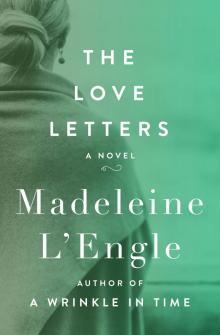 Love Letters
Love Letters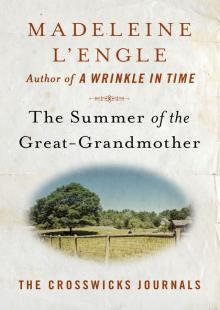 The Summer of the Great-Grandmother
The Summer of the Great-Grandmother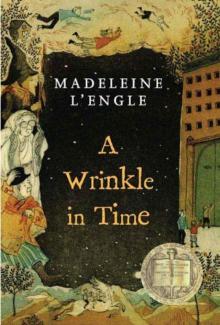 A Wrinkle in Time
A Wrinkle in Time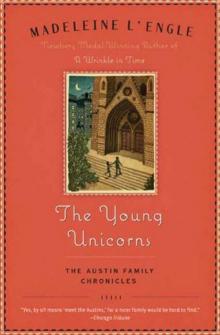 The Young Unicorns
The Young Unicorns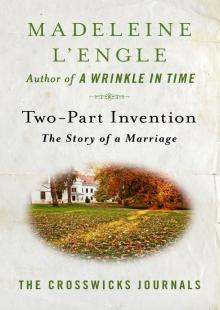 Two-Part Invention: The Story of a Marriage
Two-Part Invention: The Story of a Marriage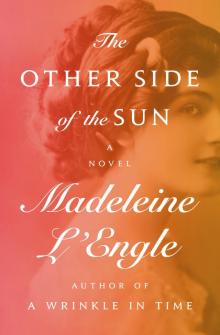 The Other Side of the Sun
The Other Side of the Sun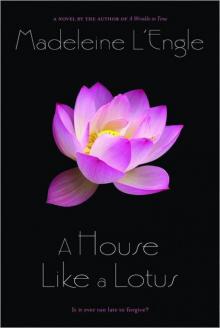 A House Like a Lotus
A House Like a Lotus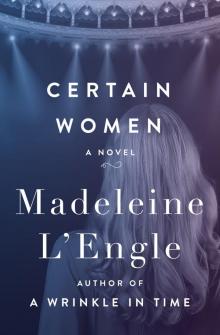 Certain Women
Certain Women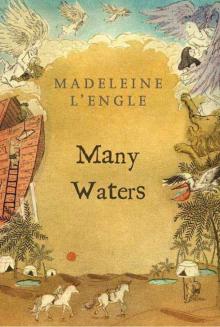 Many Waters
Many Waters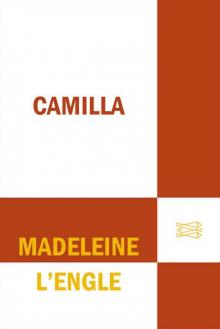 Camilla
Camilla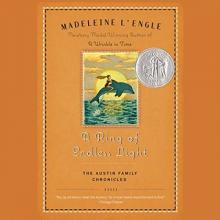 A Ring of Endless Light
A Ring of Endless Light Meet the Austins
Meet the Austins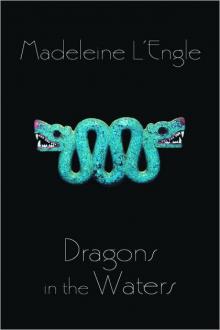 Dragons in the Waters
Dragons in the Waters The Small Rain
The Small Rain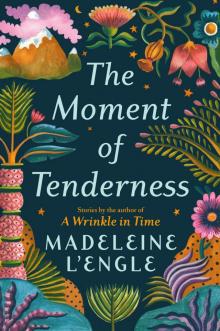 The Moment of Tenderness
The Moment of Tenderness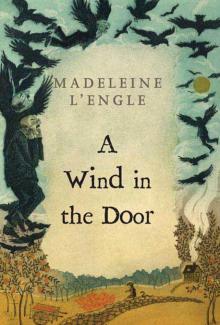 A Wind in the Door
A Wind in the Door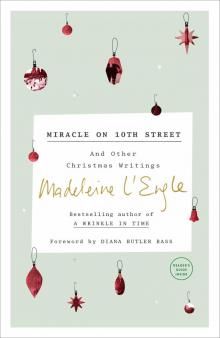 Miracle on 10th Street
Miracle on 10th Street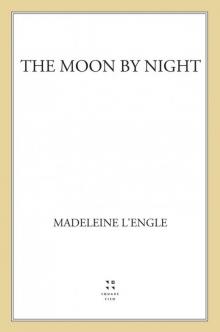 The Moon by Night
The Moon by Night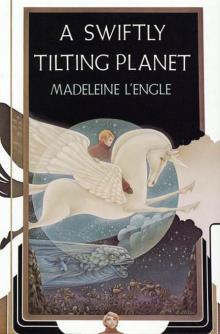 A Swiftly Tilting Planet
A Swiftly Tilting Planet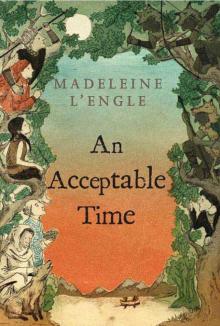 An Acceptable Time
An Acceptable Time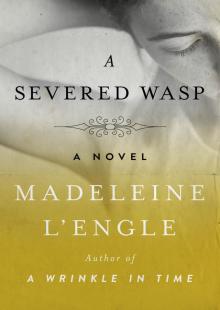 A Severed Wasp
A Severed Wasp The Irrational Season
The Irrational Season A Circle of Quiet
A Circle of Quiet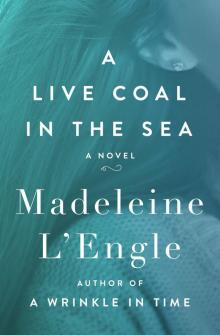 A Live Coal in the Sea
A Live Coal in the Sea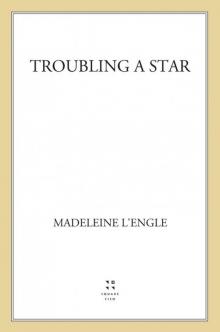 Troubling a Star
Troubling a Star Walking on Water: Reflections on Faith and Art
Walking on Water: Reflections on Faith and Art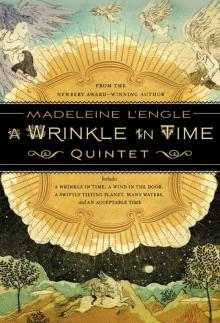 A Wrinkle in Time Quintet
A Wrinkle in Time Quintet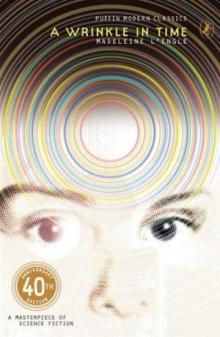 Wrinkle in Time
Wrinkle in Time The Wrinkle in Time Quintet
The Wrinkle in Time Quintet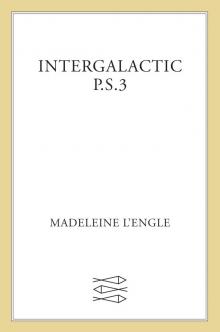 Intergalactic P.S. 3
Intergalactic P.S. 3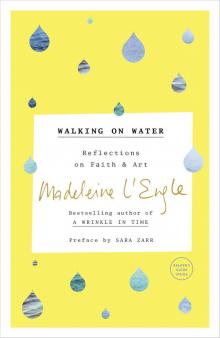 Walking on Water
Walking on Water Bright Evening Star
Bright Evening Star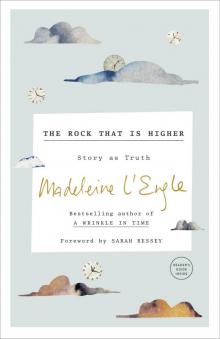 The Rock That Is Higher
The Rock That Is Higher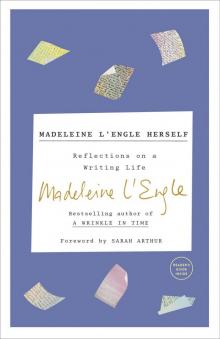 Madeleine L'Engle Herself
Madeleine L'Engle Herself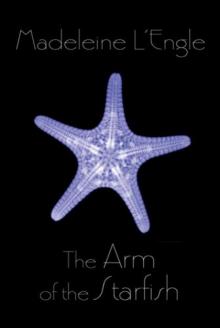 The Arm of the Starfish
The Arm of the Starfish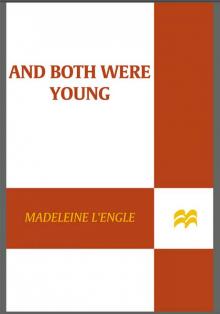 And Both Were Young
And Both Were Young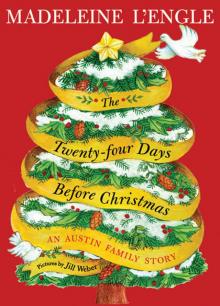 The Twenty-four Days Before Christmas
The Twenty-four Days Before Christmas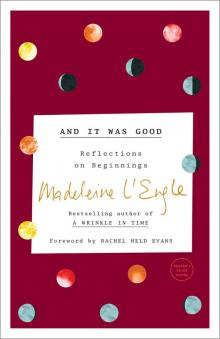 And It Was Good
And It Was Good A Stone for a Pillow
A Stone for a Pillow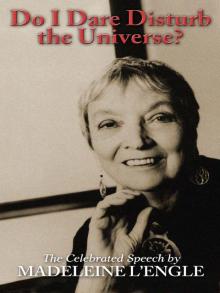 Do I Dare Disturb the Universe?
Do I Dare Disturb the Universe? Sold into Egypt
Sold into Egypt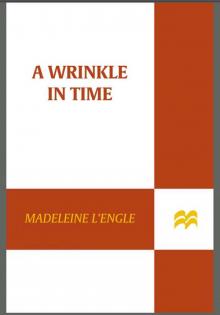 A Wrinkle in Time (Madeleine L'Engle's Time Quintet)
A Wrinkle in Time (Madeleine L'Engle's Time Quintet)